The ThinkPad at 25: Designing an icon
A design for life

This year marks the 25th Anniversary of the ThinkPad, the easily-recognizable laptop from Lenovo that has been powering businesses for quarter of a century. There are very few devices in the laptop space that can truly be described as having an ‘iconic’ design, but with its black case, red trackpoint and robust design, the ThinkPad is one of them.
Since the launch of the ThinkPad 700C on October 5 1992, over 130 million ThinkPad devices have been sold worldwide, so it’s little surprise that Lenovo, which acquired the division and brand from IBM in 2005, is keen to mark this milestone.
As part of the 25th anniversary celebrations, we visited the birthplace of the ThinkPad, the Yamato Lab in Yokohama, Japan, and spoke to a number of people who have turned it into the institution it is today.
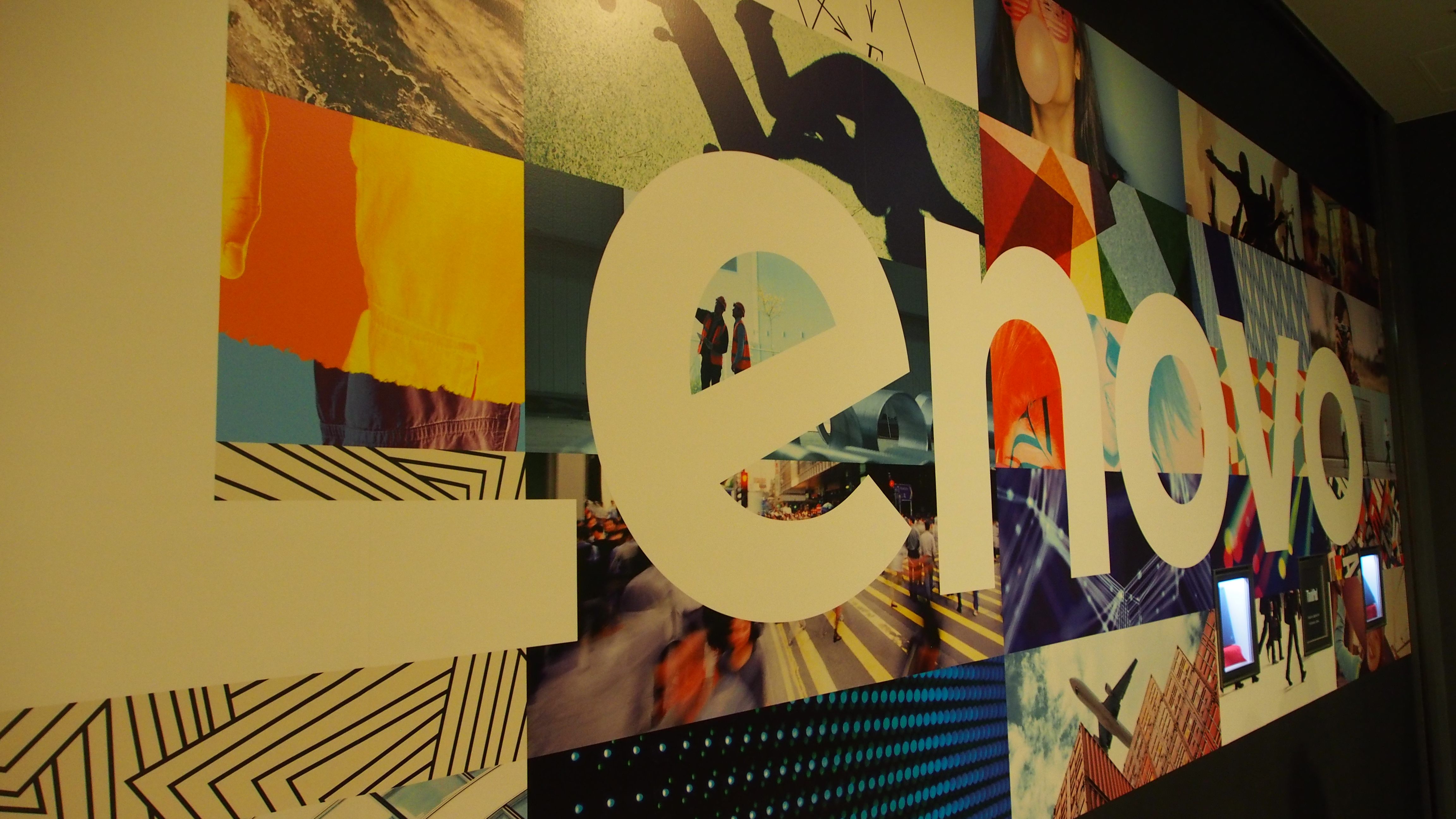
The origins of the ThinkPad
Back in 1992, the PC and laptop world was very different. PCs were big, bulky and beige monoliths that sat in offices, or in separate rooms of the home, while laptops weren’t much more portable. Sure, you could pick them up and take them with you, but hardware limitations such as poor battery life and the need to plug in various devices, such as printers, and have a wired connection to a network, meant the portability of these devices was limited.
Arimasa Naitoh, Vice President and CTO of Product Group, is widely considered the 'father of the ThinkPad', and headed up the creation of the first generation of the device at the Yamato lab. He spoke to us at an exclusive roundtable event about the genesis of the ThinkPad.
“My boss commuted by train, and was too busy to read emails,” Naitoh-san reminisced, noting that there were often not enough hours in the working day to get everything done. “Japanese people wanted to work longer and work more, but there was no way to work after he left the office.”
"ThinkPad is productivity. Productivity comes from mobility."
Arimasa Naitoh
So the germination of the ThinkPad, according to Naitoh-san, was in the frustration that many people had when trying to work away from the office. “What we are doing [with ThinkPad] is giving you the same productivity as if you were in the office, no matter where you are. ThinkPad is productivity. Productivity comes from mobility.”
Are you a pro? Subscribe to our newsletter
Sign up to the TechRadar Pro newsletter to get all the top news, opinion, features and guidance your business needs to succeed!
This goal, Naitoh-san said, has been the driving force behind ThinkPad. “Everything we do comes back to that purpose: great mobility, great productivity, and then the success of your business”.
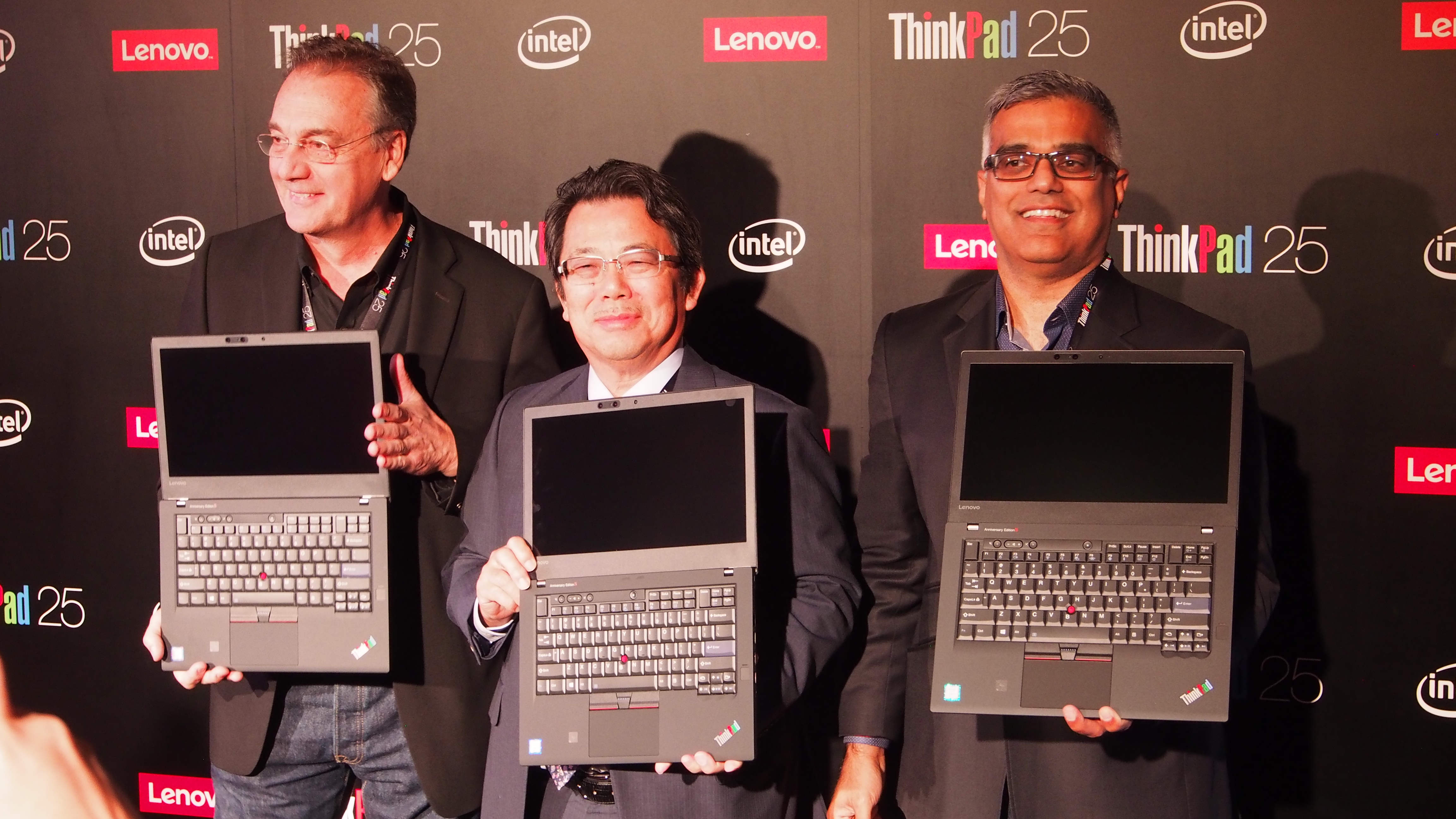
Coming up with an iconic design
The simple ethos that Naitoh-san spoke of is a huge part of the ThinkPad’s success – but it isn’t the only part. The iconic design, which again combines simplicity with productivity, is also a huge factor.
As David Hill, the former Chief Design Officer who oversaw 22 years of ThinkPad design, told us, the original ThinkPad came out with “the one-two punch of engineering and great design”.
The original design, elements of which modern ThinkPads still include today, was conceived by German industrial designer Richard Sapper. Sapper, who died in 2015, was inspired to design the ThinkPad by traditional Japanese bento boxes.
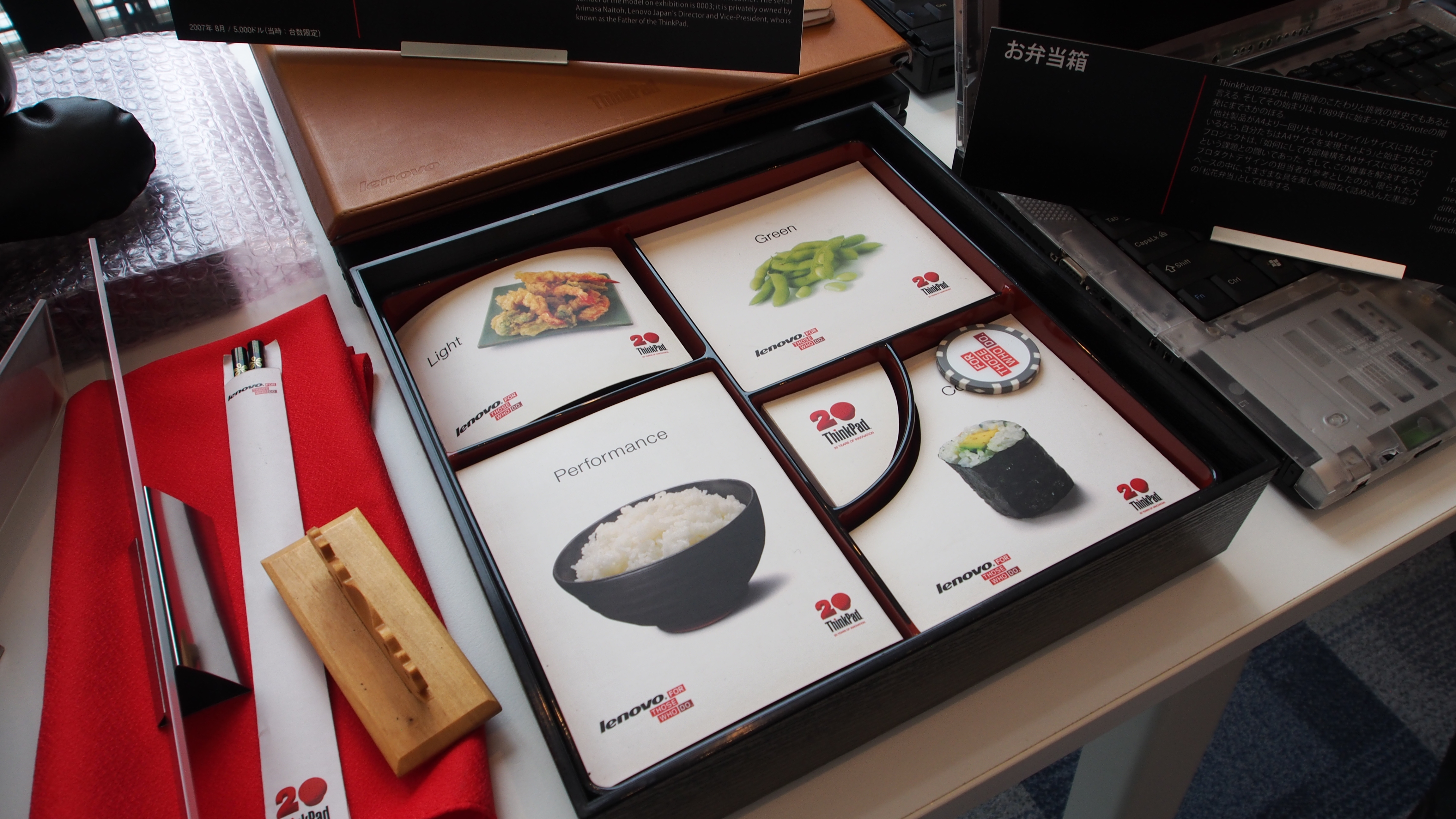
These compact boxes contain various foods in separate compartments, and when you opened up the body of the original ThinkPad, which had similar dimensions to a bento box, you would find the components arranged in a similar manner.

At the Yamato Lab we talked to David Hill, as well as Brian Leonard, who is vice president of design for Lenovo’s PCs and Smart Devices business group. We started by talking about designing a business laptop, and if creating a device for business users was constraining, compared to building a commercial device for mainstream users.
“I don’t view it as constraining. I view it as having focus,” Hill told us. “I don’t think that things that are utilitarian or tool-like are necessarily not attractive. I think a Jeep is a very cool looking vehicle! But it was a military vehicle originally, and not everyone wants to drive one to a grocery store.”
Leonard agreed: “I think it’s interesting, because you really know your customer. You really know with all the different business products we make, who they are targeting, and what they do. It kind of helps you develop a richness into the product and make sure it is focused on them. Versus the consumer side of things that’s kind of designing stuff for everybody.”
But what about designing a ThinkPad? After 25 years, it’s fair to say that the ThinkPad has developed an iconic and unmistakable look. There are certain expectations that people have about what a ThinkPad should look like. The black chassis, the red TrackPoint. Does this iconic design end up being restrictive?
“Sometimes I’ve had newer designers say ‘isn’t this constraining, that it has to look like a ThinkPad?’ Well, we actually make it up! We make up our own rules, it’s our rules. There’s no ThinkPad bible in the sky!” says Hill.
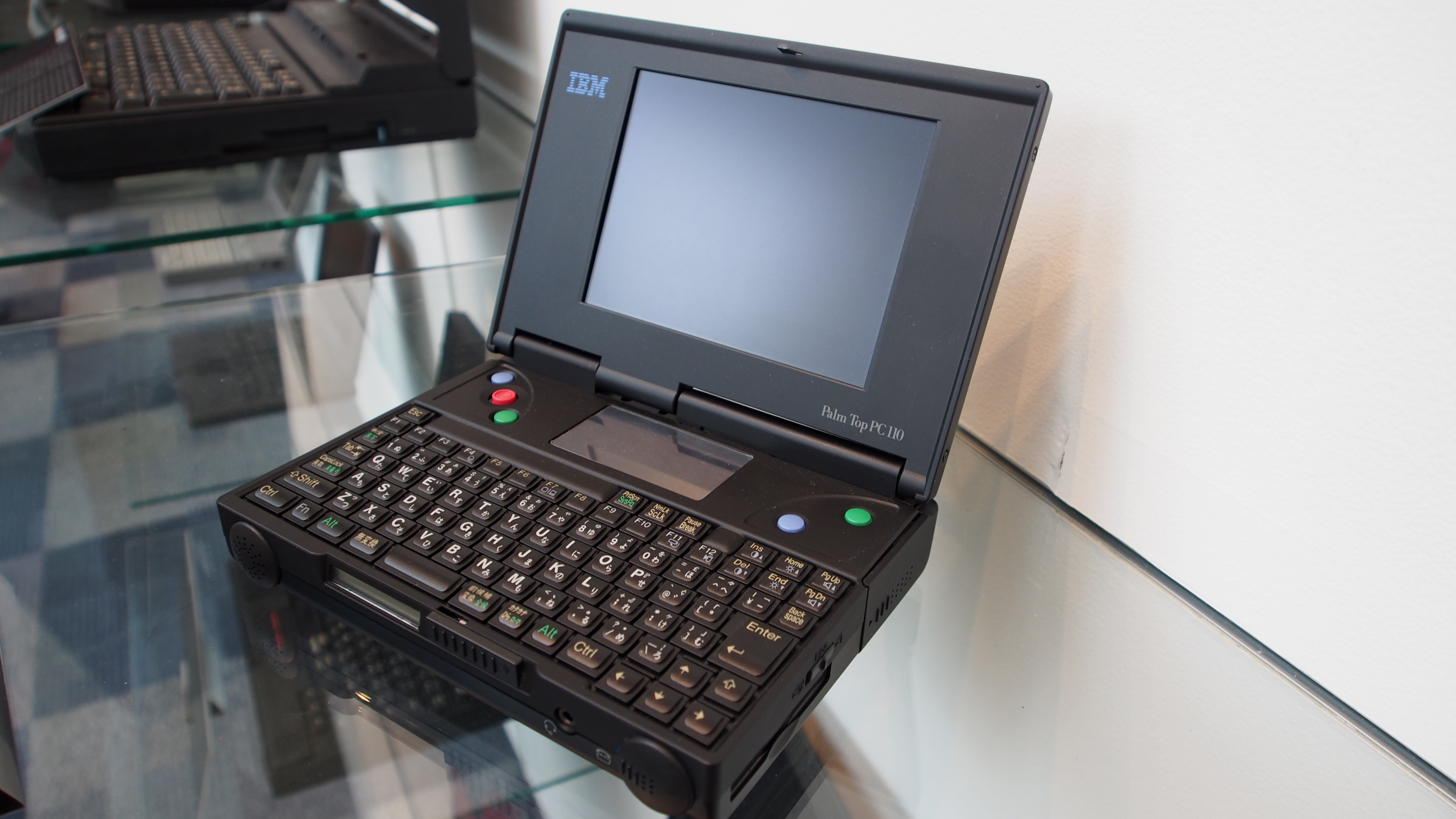
“As soon as we’d write a rule down, we’d go and break that rule!” adds Leonard. So, there’s actually no hard and fast rules about what a ThinkPad should look like. As David Hill put it, “There is no ThinkPad design codebook. It doesn’t exist.”
“There is no ThinkPad design codebook. It doesn’t exist.”
David Hill
However, there is a common design ethos visible in every ThinkPad product, with subtle nods to Richard Sapper’s design for the original ThinkPad. But nothing is sacred. As David Hill explained to us, that original iconic design “is on our minds and in our hearts. It’s not on a page in a book, or some poster on a wall. We’ve probably changed the colour of the black ten times!”
A day earlier, at the roundtable event, David Hill explained why he joined IBM to work on ThinkPad. “For me, one of the things that interested me in 1995 was the opportunity to work with a master such as Richard Sapper. His designs combined German sensibility with Italian flair.”
“As soon as we’d write a rule down, we’d go and break that rule!”
Brian Leonard
Although both Hill and Leonard did not feel that designing a laptop for business use was restrictive, there were challenges that Richard Sapper encountered when pitching the more unconventional design aspects of the ThinkPad to IBM.
One such hurdle was the red TrackPoint. Today that unique TrackPoint, which can be used to move the mouse cursor, is such an integral part of the ThinkPad design that it is hard to imagine it not appearing on a ThinkPad device.
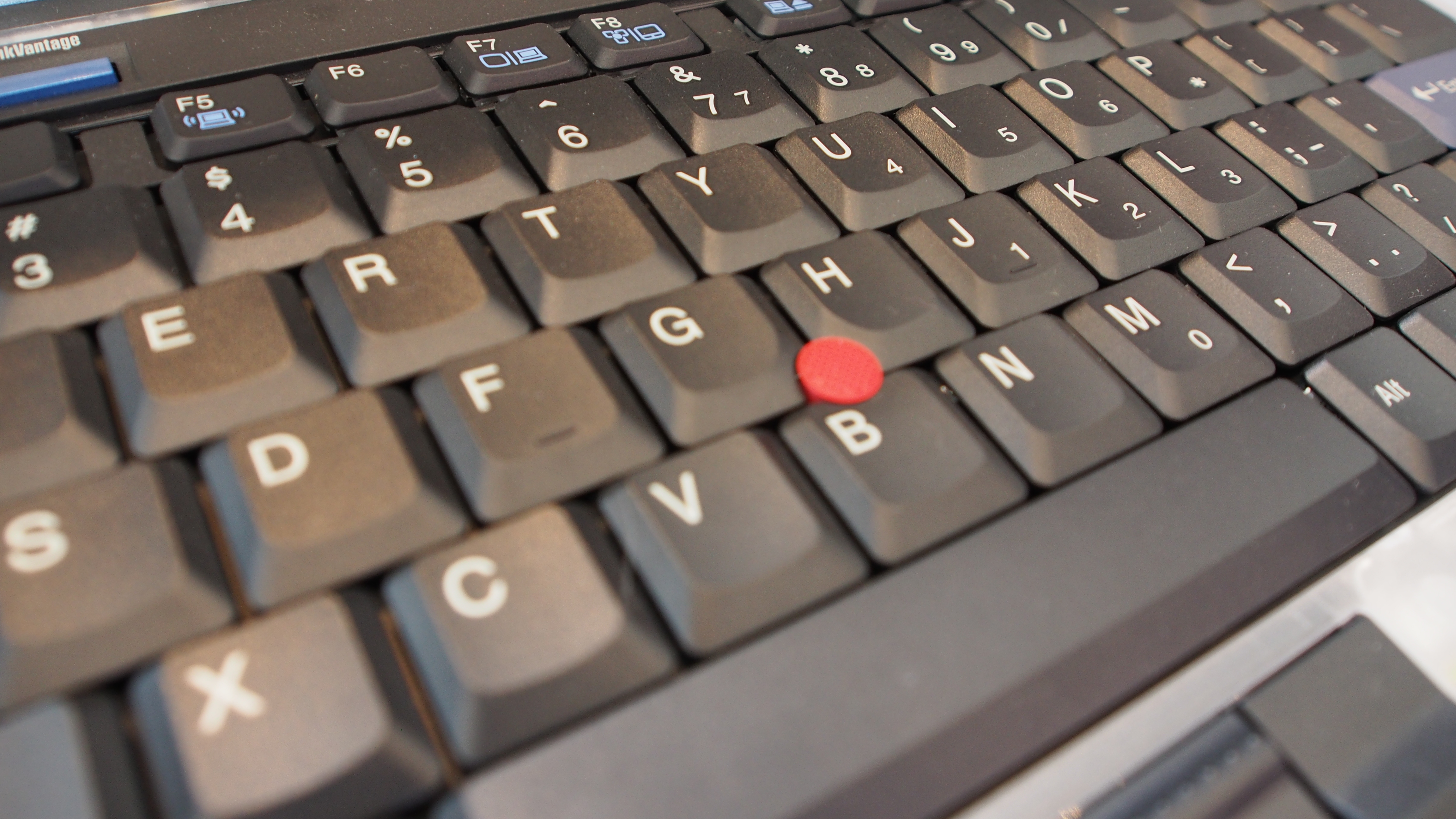
However, as David Hill explained, that was almost the case: “when Richard wanted to make the TrackPoint red, IBM didn’t want that, as red was the color for the emergency power switch of mainframes.”
IBM didn’t want the TrackPoint on its new laptop having such negative connotations, but Sapper wasn’t discouraged. Determined to stay true to his vision for the ThinkPad, he came up with a creative solution to get his way. “He invented a way around it,” Hill explained, “he changed the name of the color from red to magenta, but it was the same color. The product safety people approved, as he called it IBM magenta.”
That ability to come up with a design, to stay true to it, and to find creative solutions to problems make designers and creators such as Richard Sapper and Arimasa Naitoh, along with David Hill and Brian Leonard, stand out.
Earlier in the week we visited the Cupnoodles Museum in Yokohama. This museum charts the trials and tribulations of Momofuku Ando, the creator of instant ramen noodles, in a wonderfully quirky way.
Instant noodles are so commonplace these days that it’s hard to imagine a time when they didn’t exist, and Momofuku Ando’s creative solutions to the problem of mass producing noodles that could be easily made with just hot water has some clear parallels with the work Richard Sapper did with the ThinkPad, and which the ThinkPad team continue to do.
There’s a special way of looking at the world and finding inspiration to solve problems, where other people just see the problem. As David Hill told us, “That’s the ThinkPad way. We go try to figure out how to fix it.”
“That’s the ThinkPad way. We go try to figure out how to fix it.”
David Hill
Solving new problems
Of course, over the 25-year lifespan of the ThinkPad, what people want out of a laptop – and the problems they want solved – has changed considerably.
“When I first started working on ThinkPads, they were a device that was considered portable,” Hill told us. “What I mean by that is I could use it in one place, then move it and use it over to another place. When I get over there, the first thing I would do is look for a phone connection and somewhere to plug it in the wall. Because the battery life wasn’t very long. The only way I could connect it would be through a modem. It’s very different now.”
Nowadays, people almost take that sort of portability for granted. Dilip Bhatia, Vice President of Global Marketing, User and Customer Experience at Lenovo, explained to us what customers are now looking for.
"In order to retain talent you need to provide tools for them to be productive."
Dilip Bhatia
“What really matters to our customers? There are three things they look for, including millennials. The first is time. We want our devices to be easily accessible. The second is comfort. We want to be able to use our devices anytime, anywhere. The third is that human connection. We want to connect with friends and family, and collaborate across continents”.
Chat rooms, message boards, VoIP services, social networks and online collaboration tools have all helped over the years to make connecting to people all over the world possible. Customers these days, especially young people, expect their device to be able to do this.
For businesses, it’s important to invest in devices that will meet those expectations. As Bhatia told us, “In order to retain talent you need to provide tools for them to be productive.”
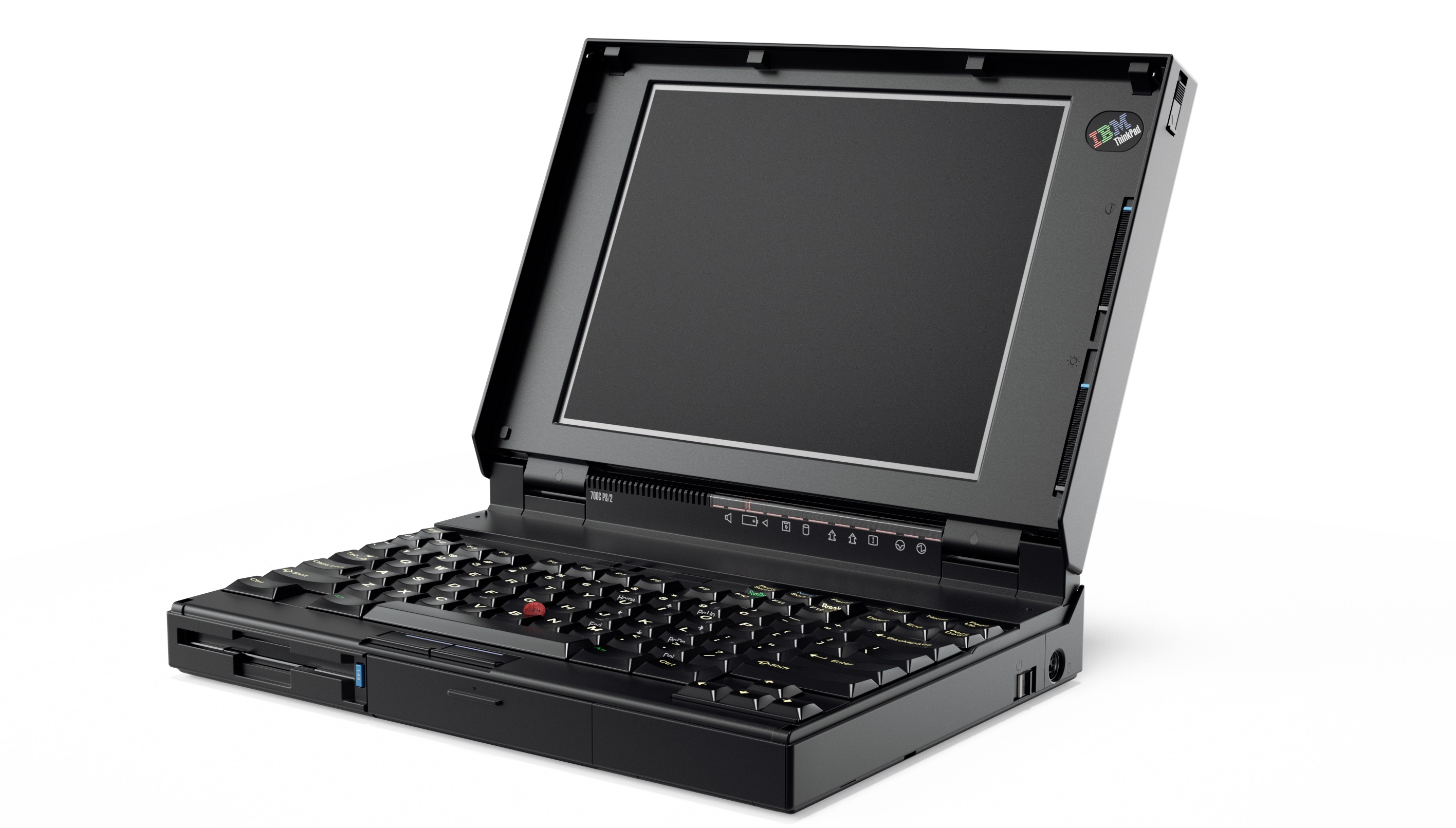
Brian Leonard also agrees, highlighting the changing expectations of users when it comes to communication and collaboration. “We’ve always used [laptops] as a tool, but now they’ve become a real communication device. Whether we’re presenting to people all over the world, or we’re on conference calls… it’s become a very different device, so I think it’ll be interesting to see how we may need to change.”
The way we work has changed, so ThinkPad needs to change with it. “Nobody works in the same space, we don’t work the same way. People don’t have offices, a lot of people don’t have a dedicated desk. You get a desk when you come in, or you’re working at home.”
“The beauty of ThinkPad is in the harmony of the design and purpose.”
Brian Leonard
It’s not just at work where our computing habits and expectations have changed. As David Hill explains, “looking at the home, when the personal computer first came into the home, people didn’t know what to do with it. So you would go into someone’s house and they would have their PC in the dining room. Because, what do you do with the darn thing?
“Then an industry came up with weird crappy furniture where you could put a printer in it. A pull-out thing for the keyboard. Then people started building houses that had a computer room. Now, these computer rooms have cobwebs in them. Because you don’t go to a room to do computing any more. Where do you use your computer? Everywhere.”
By solving those problems, while producing an elegant and desirable device, ThinkPad has become one of the most popular laptop brands in the world. As Brian Leonard said at the roundtable discussion we were present at, “the beauty of ThinkPad is in the harmony of the design and purpose.”
David Hill also explained that the “design for ThinkPad fuses these ideas of form and function. It’s hard to talk about one without the other.” When we spoke to him later on, he elaborated on that theme.
"I think that’s one of the reasons you buy a ThinkPad. They work. There’s no bullshit."
David Hill
“Our goal is to blur the boundaries between the two ideas of form and function, hopefully finding a solution that’s both functional and beautiful looking.” But when creating a business laptop, shouldn’t function always take priority over form?
“We would never want to make a ThinkPad where something didn’t work right,” Hill explains. “That’s off brand. We wouldn’t want to compromise something like that. I think that’s one of the reasons you buy a ThinkPad. They work. There’s no bullshit. You know what I mean?”
Leonard agrees. “I love that I know every time I open it or close it, what’s going to happen. Every time. There’s a lot of things out there that you don’t know that. There’s no dependability about those devices. The ThinkPad is so repeatable in what it does.”
“I trust ThinkPad. If I were to take a laptop to outer space, I’d take a ThinkPad,” says Hill.
“Well, that’s actually what they do take!” adds Leonard.
“Exactly.”
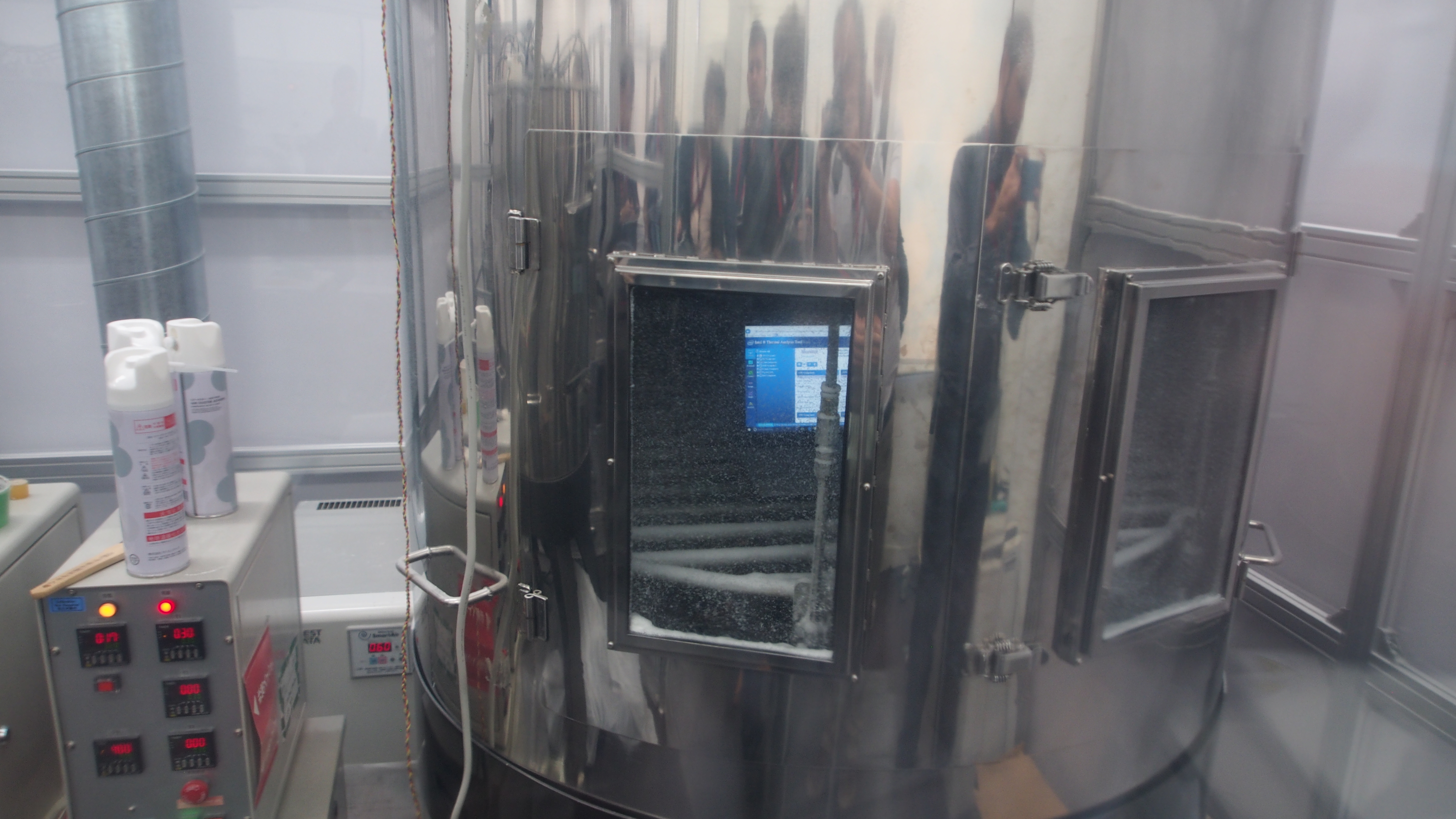
Designing for durability
As we chatted to Brian Leonard and David Hill, it became clear that reliability and durability are major parts of the ThinkPad design, and during our time with Lenovo in its Yamato Lab, we saw just how seriously it tests every iteration of ThinkPad to ensure they are as durable as possible.
“Time is one of the few things that may ultimately establish the true quality of an object.”
Richard Sapper
As Luis Hernandez, leader of Lenovo’s Product Group PC Development Team, told us: “It is not a ThinkPad until it passes our tests.” The tests he is referring to are the range of automated durability tests that are mainly conducted in the Yamato Lab. “These are testing methods we have accumulated over 25 years,“ continues Hernandez. “Many of those tests are unique, because we’ve learned how our customers use our products, Then we create a test for it.”
Yamato Labs tour
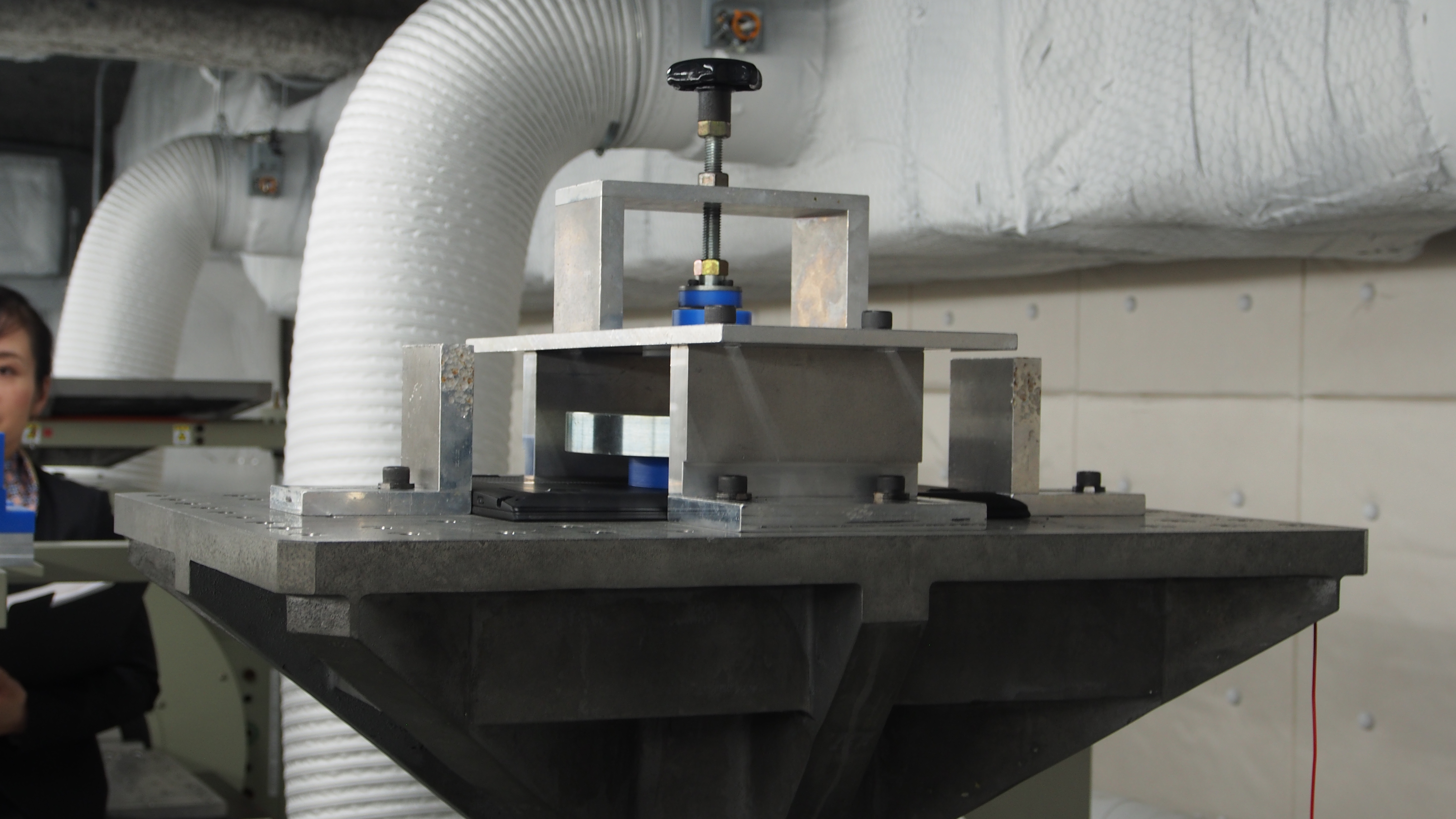
Robustness and Durability Design lab
We got to see a number of these quality control tests while we toured the Yamato Lab. Our first stop was at the Robustness and Durability Design lab.
Here, we saw a machine that tested repeated impacts. A ThinkPad was clamped in place while exposed to strong impacts. The device would then be checked to ensure no physical damage had occurred.
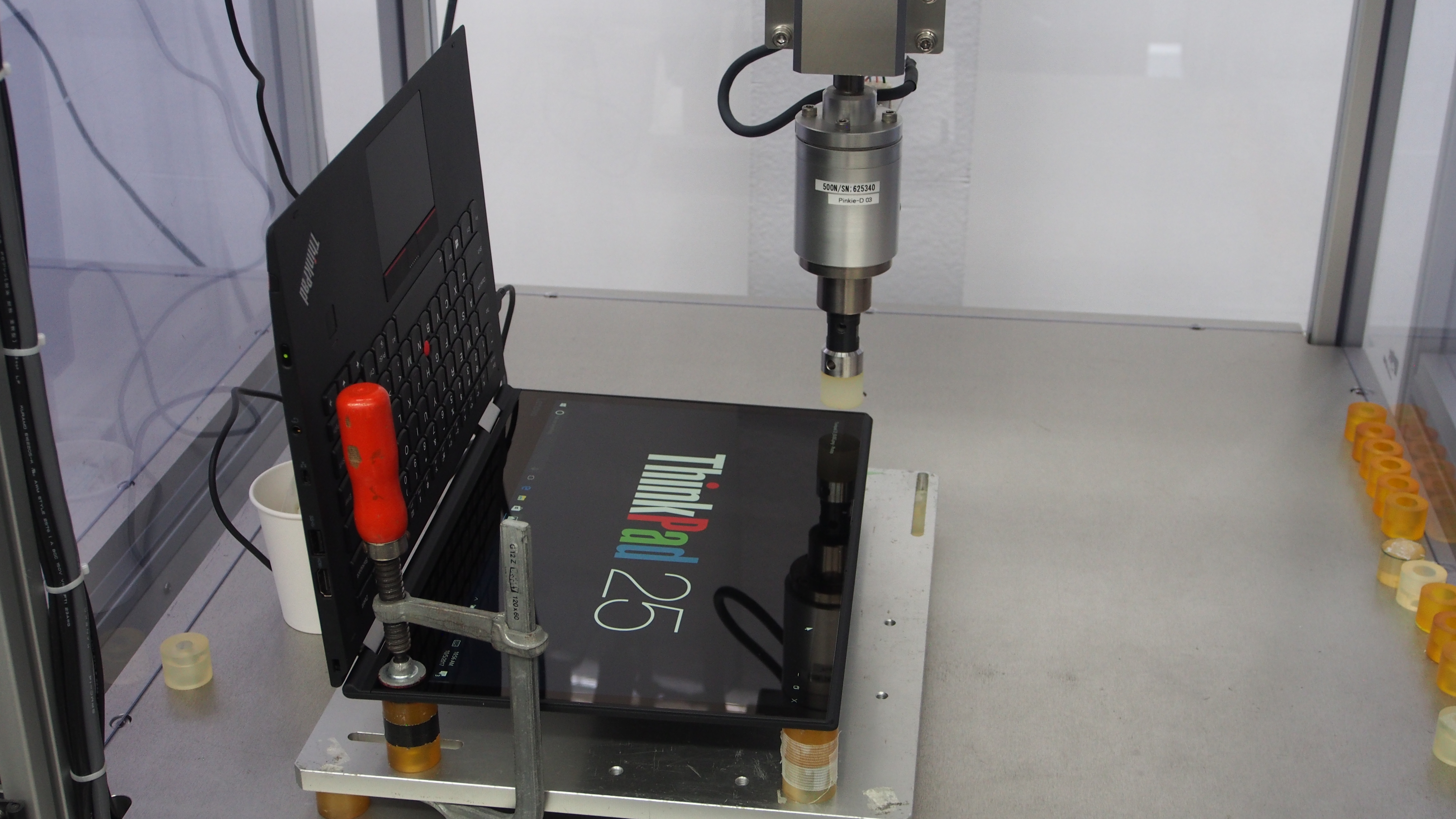
Pressure tests
Another test measured resistance to pressure and involved simulating conditions where a ThinkPad is moved around in a bag with other items. Drop testing, exposure to dust and LCD stress testing (where a machine applied pressure to corners of an LCD screen) were also found in this lab.
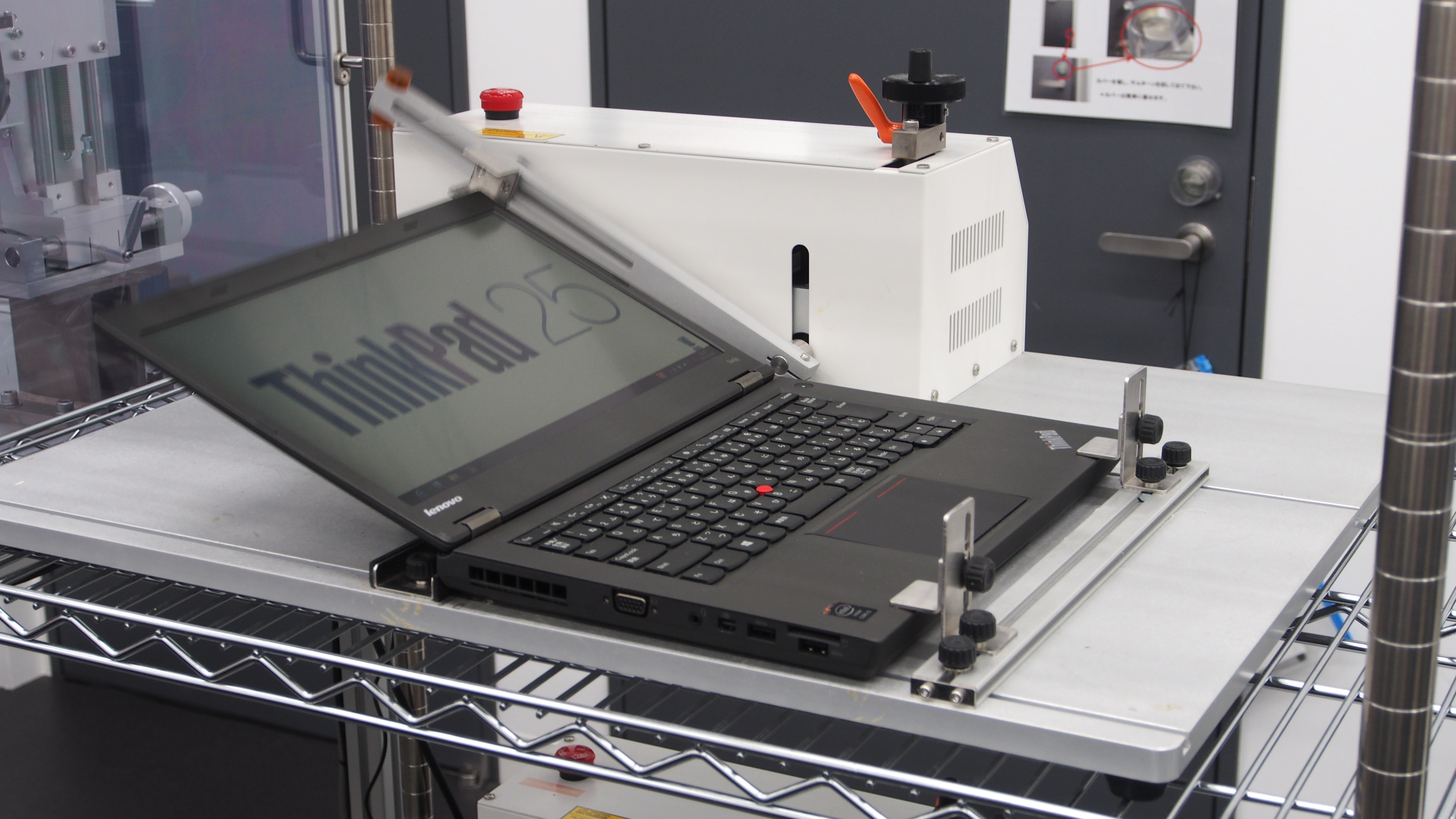
Durability Design lab
We then moved to the Durability Design lab, where tests that put ThinkPads through various stressful situations, such as static electricity exposure, are carried out.
We saw machines that repeatedly open and close ThinkPads in the Durability Testing area, which ensure that the devices can withstand being opened and closed without hinges breaking or any other kind of issues.
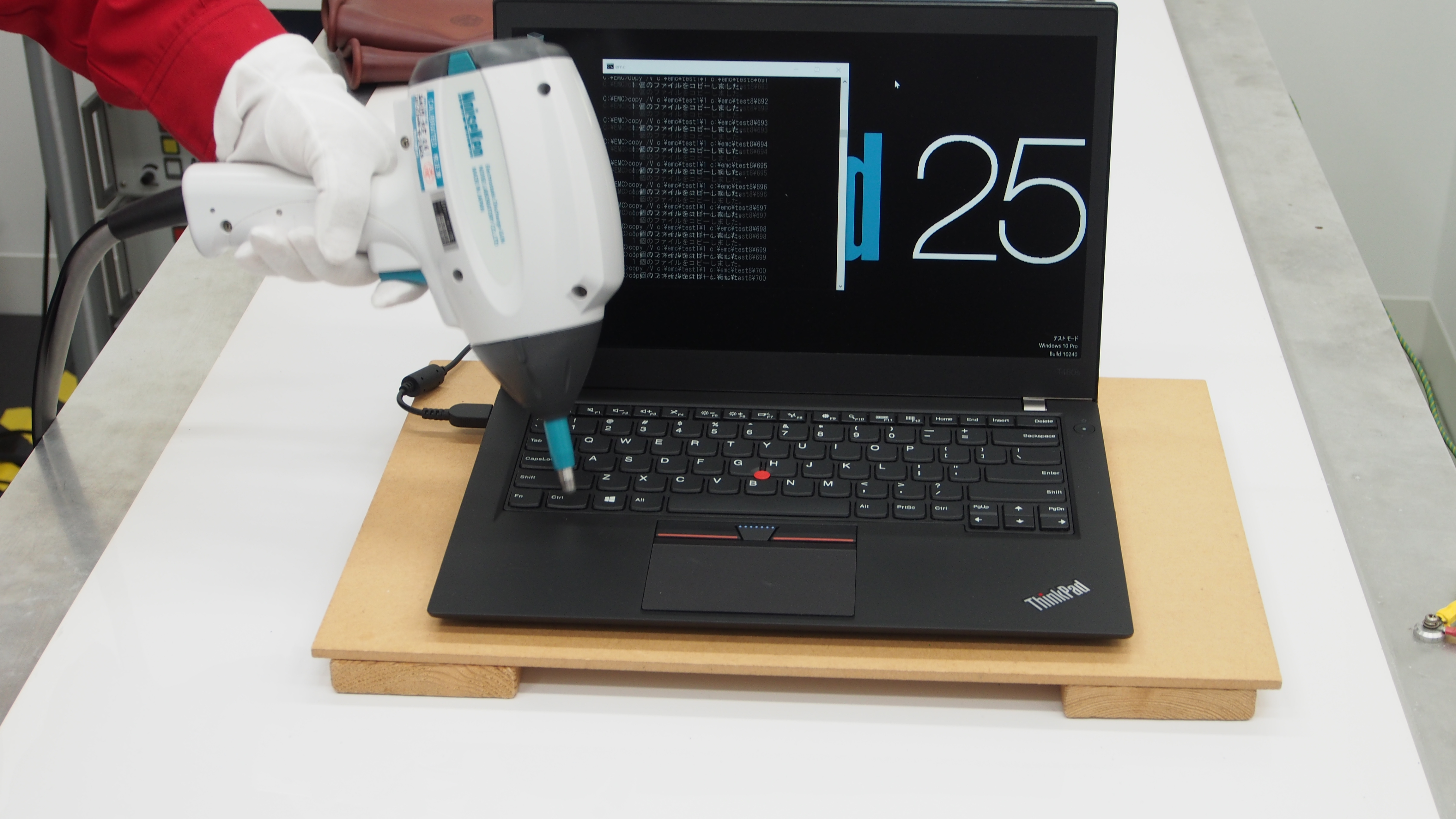
EMC testing
In a special area for EMC testing, ThinkPads are exposed to static electricity, including a test that uses electronic voltage over 10,000 to make sure the ThinkPad, and components like the USB port, can withstand the shocks.
An Electromagnetic Shielding Booth allows the lab to generate thunder noises, power-supply noises, broadcast waves and magnetic fields to gauge their effects on ThinkPad devices.
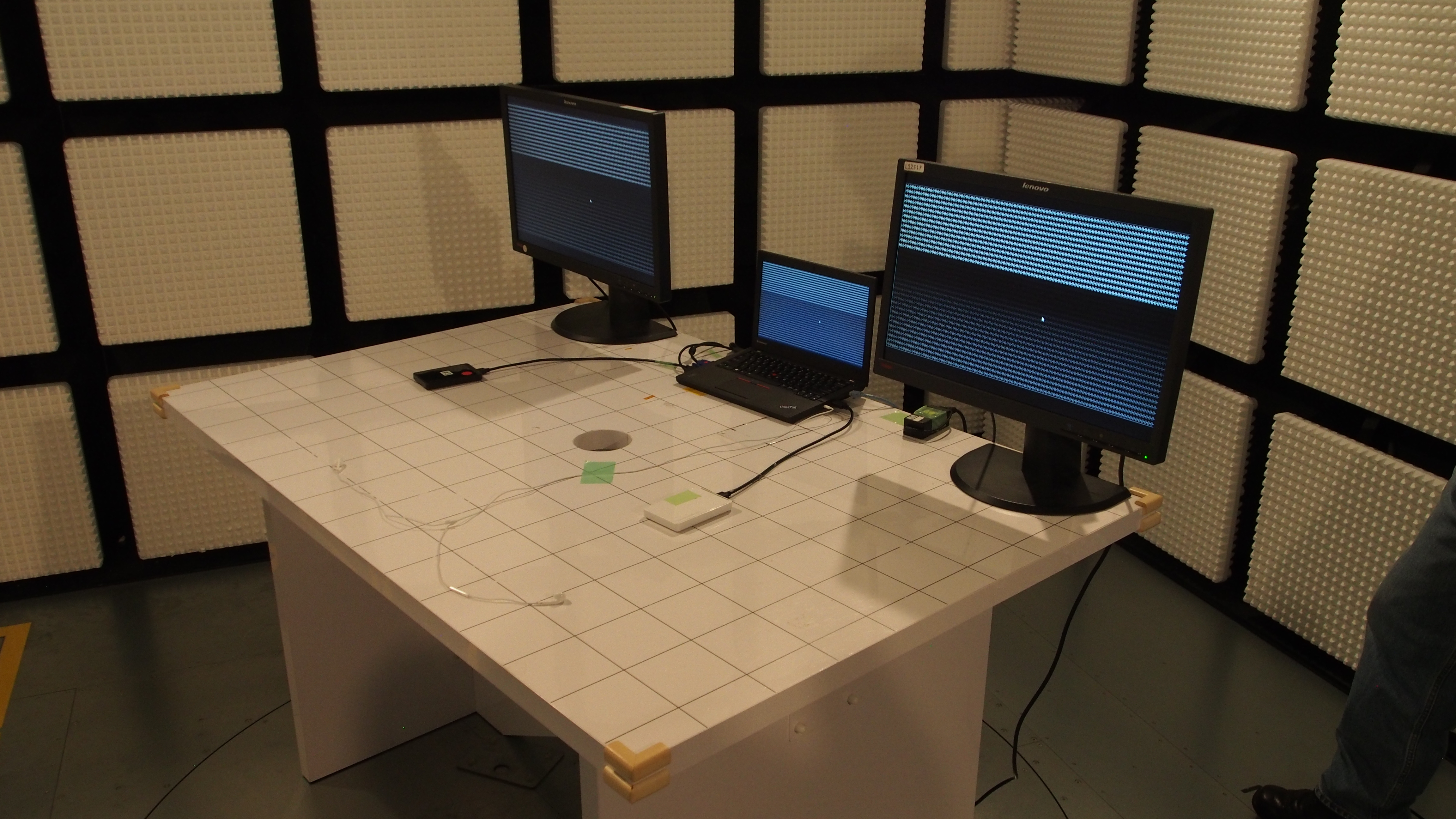
EMC and Reliability Design lab
We then headed to the EMC and Reliability Design lab, where a number of tests were performed that evaluate the amount and type of electromagnetic waves ThinkPads emit, as well as testing ThinkPad devices’ reliability with exposure to temperature swings.
The Hemi-Anechoic radio wave dark room is used to measure electromagnetic waves produced by a ThinkPad (which is placed on a rotating desk), and to make sure these emissions conform to standard values around the world, as well as checking that these will not affect wireless antennas and other parts.
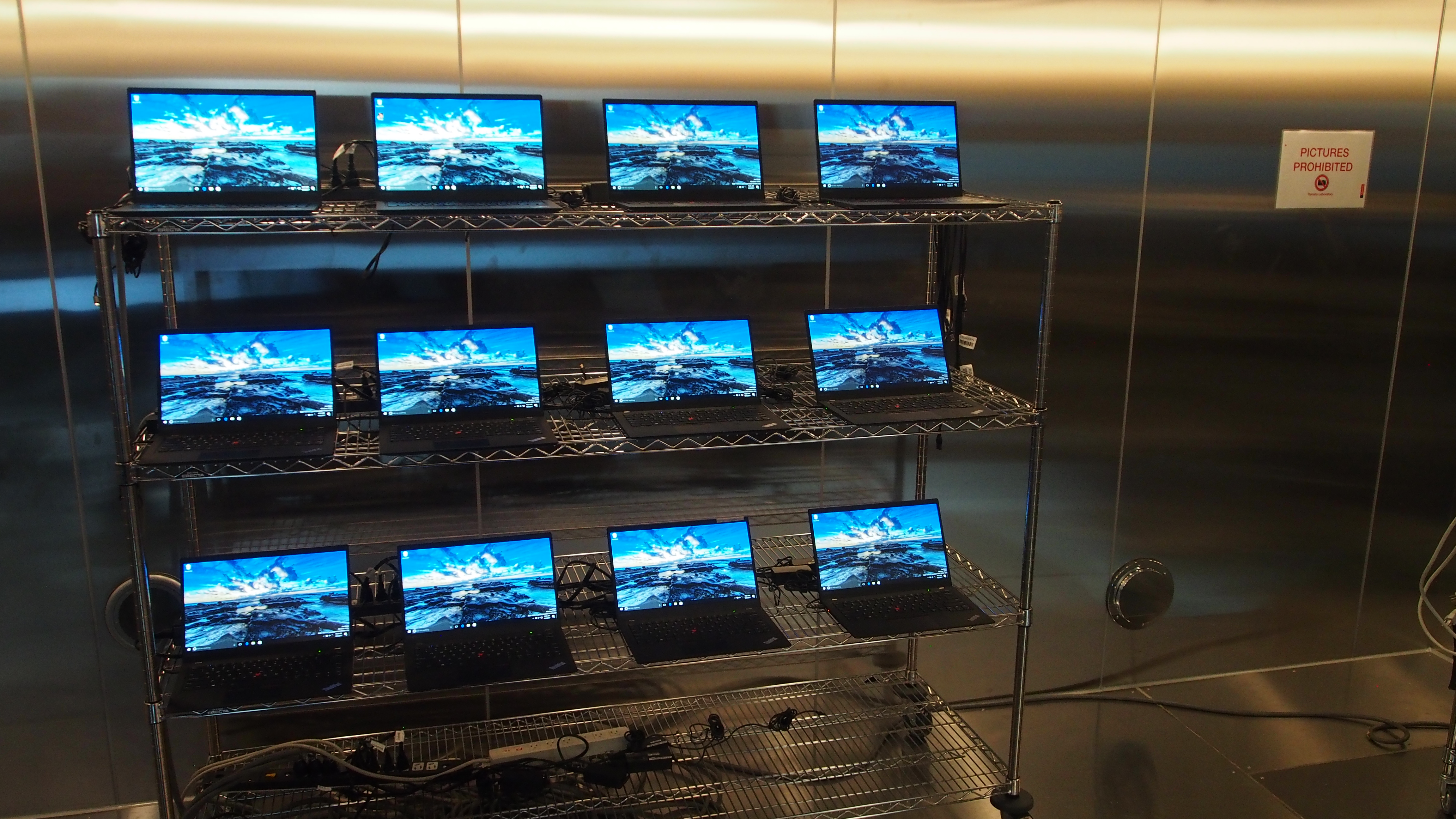
Constant Temperature and Humidity Chamber
Meanwhile, the Constant Temperature and Humidity Chamber subjects ThinkPads to low temperatures and sudden humidity changes to see how well they cope in similar real-world situations when being transferred as cargo.
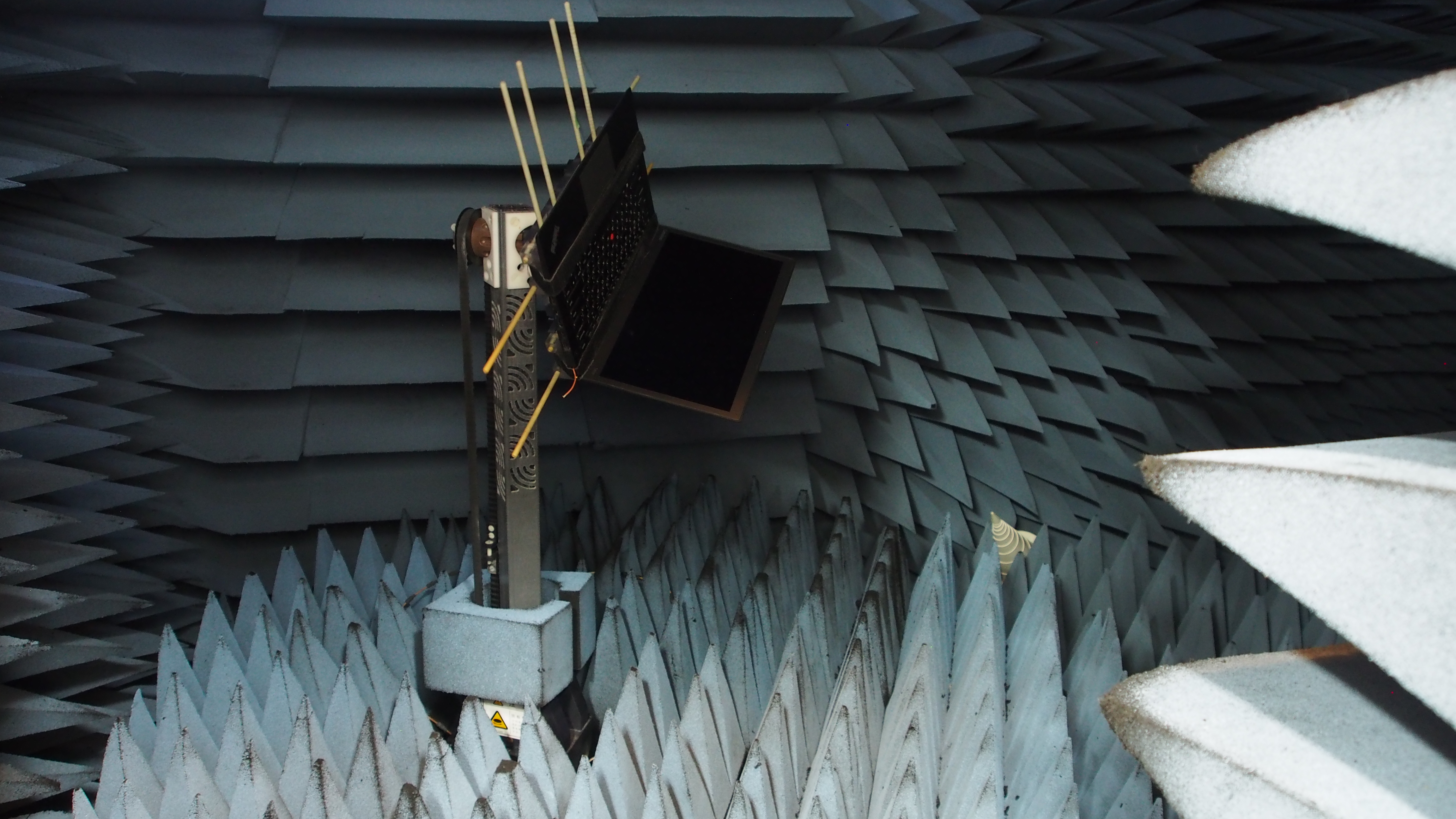
Wireless and Acoustic Design lab
We also visited the Wireless and Acoustic Design lab, home to perhaps some of the most bizarre looking, yet incredibly important, tests.
These included a ThinkPad suspended in a small dark room surrounded by foam spikes, which absorbs radio waves and blocks out waves from the outside, allowing for testing of the accuracy of the antennas inside the ThinkPad.
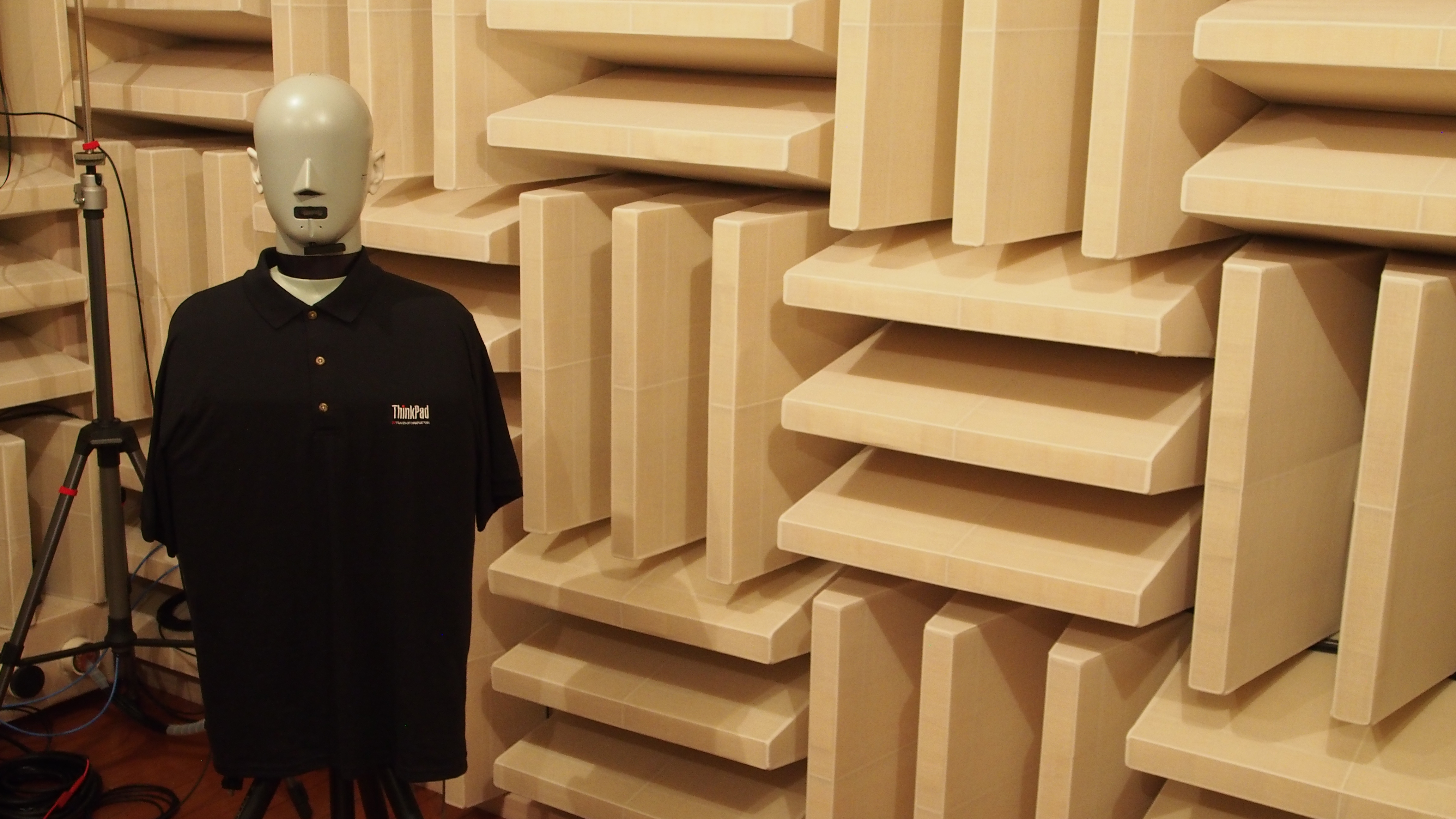
Hemi-Anechoic room
Meanwhile, the Hemi-Anechoic room is a microphone-filled noise proof room (and includes a dummy head with two microphones for ears) that measures how noisy the components inside the ThinkPads are. This helps Lenovo to design ThinkPads that run as quietly as possible.
Our time at the Yamato Laboratory really highlighted how much thought – and effort – goes into making the ThinkPad, and how much of a careful balance it strikes between form and function.
At the roundtable meeting, David Hill told us a quote by Richard Sapper: “Time is one of the few things that may ultimately establish the true quality of an object”. Now, 25 years on from the original ThinkPad, and witnessing how much thought and effort goes into the design, it’s safe to say that the ThinkPad has achieved that lofty aim.

Matt is TechRadar's Managing Editor for Core Tech, looking after computing and mobile technology. Having written for a number of publications such as PC Plus, PC Format, T3 and Linux Format, there's no aspect of technology that Matt isn't passionate about, especially computing and PC gaming. He’s personally reviewed and used most of the laptops in our best laptops guide - and since joining TechRadar in 2014, he's reviewed over 250 laptops and computing accessories personally.